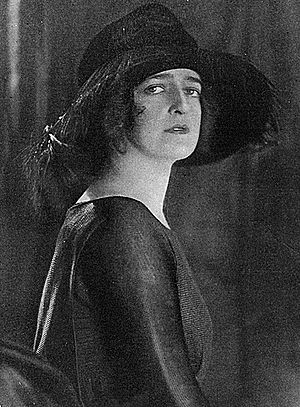Kathleen Pelham Burn facts for kids
Kathleen Pelham Burn Moore, Countess of Drogheda (1887 – 18 March 1966) was a British woman known for her many interests. She was an aviator, a sportswoman, and a well-known person in society. She was part of a group called the "bright young things," who were young, fashionable people in the 1920s.
Contents
Early Life and Interests
Kathleen Pelham Burn came from a wealthy family. This allowed her to follow many different hobbies and passions from a young age. She was always keen to try new things.
A Pioneer in Aviation
Kathleen was very interested in flying. She became one of the first women to ever fly as a passenger in an airplane. Because of her many flights, people started calling her "the Flying Countess." She even flew in airshows across the UK and Ireland. She did this to help raise money for the Royal Air Force during World War II.
She also supported aviation charities during World War I. She was a special guest at a party celebrating the R34 airship. This airship made the first return flight across the Atlantic Ocean.
Sports and Hobbies
Kathleen had many other hobbies too. She loved driving stylish cars around London. She was also a talented tennis player and one of the first members of the famous All England Lawn Tennis and Croquet Club (Wimbledon). She played in The Championships, Wimbledon once, in 1914.
She was also the leader of the London Ladies' Motor Club. She often played golf and enjoyed looking at modern art.
Public Recognition
In 1919, Kathleen was given a special honor. She was appointed a Companion of the Order of St. Michael and St. George. She also became a Commander of the Order of the British Empire. These awards recognized her contributions and efforts.
Family Life
Marriages and Children
Kathleen Pelham Burn's first husband was Henry Moore, 10th Earl of Drogheda. They were married in 1909. They had two children together: Charles, who was born in 1910, and Patricia, born in 1912.
Her second husband was Guillermo de Landa y Escandon. They were married in 1922.
Images for kids



